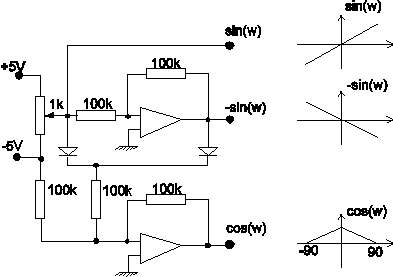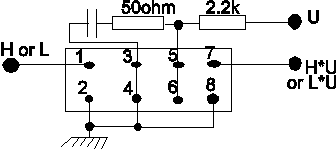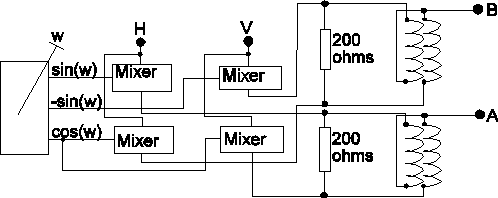It is easy to produce DC voltages corresponding to sin(w) and cos(w), where w is the turning angle of a potentiometer.

Approximate sine and cosine function generator for use in a polarisation control system
The H and L signals can be multiplied by the DC voltages representing sine and cosine for the potentiometer shaft angle with any electronically controlled attenuator, and the Schottky diode ring mixer is a suitable one since it automatically provides a sign reversal when the control signal reverses sign. I am using SBL1 from Mini-Circuits.

A schottky diode ring mixer works as a four quadrant multiplier. The IF port works down to DC, the 2.2k resistor gives a suitable current at 5V for the mixer to still be a linear multiplier. The IF port is loaded by 50 ohms for the overtones of H or L.
Combining the sine / cosine generator with two mixers gives a device that produces a signal A, corresponding to physically turning the polarisation plane by w:
A=H*sin(w) + L*cos(w)
The approximate sine / cosine generator goes from -90 to 90 degrees so it allows turning the polarisation plane through 180 degrees covering all linear polarisations provided the phase angle between the two input signals is very close to 0 (or 180) degrees.
By the addition of two more mixers another signal B is obtained, and it corresponds to a polarisation plane perpendicular to w:
B=H*cos(w) - L*sin(w)
This way of rotating polarisation is currently in use in my 144MHz station - and it works fine. I do not often use the B signal, because parallel with this system I use a computerised adaptive polarisation system, and that provides the polarisation angle even from very weak signals on a LED display.

Electronic transformation of the orthogonal pair H and V to a new orthogonal pair A and B. This transformation produces an electronic rotation of the polarisation planes while keeping orthogonality. The resistor and transformer is a hybrid arrangement producing the sum of two signals while isolating them from each other. The hybrids at the outputs can be omitted - they are for improved dynamic range, and this early in the receiver chain it may be unnecessary.
To SM 5 BSZ Main Page